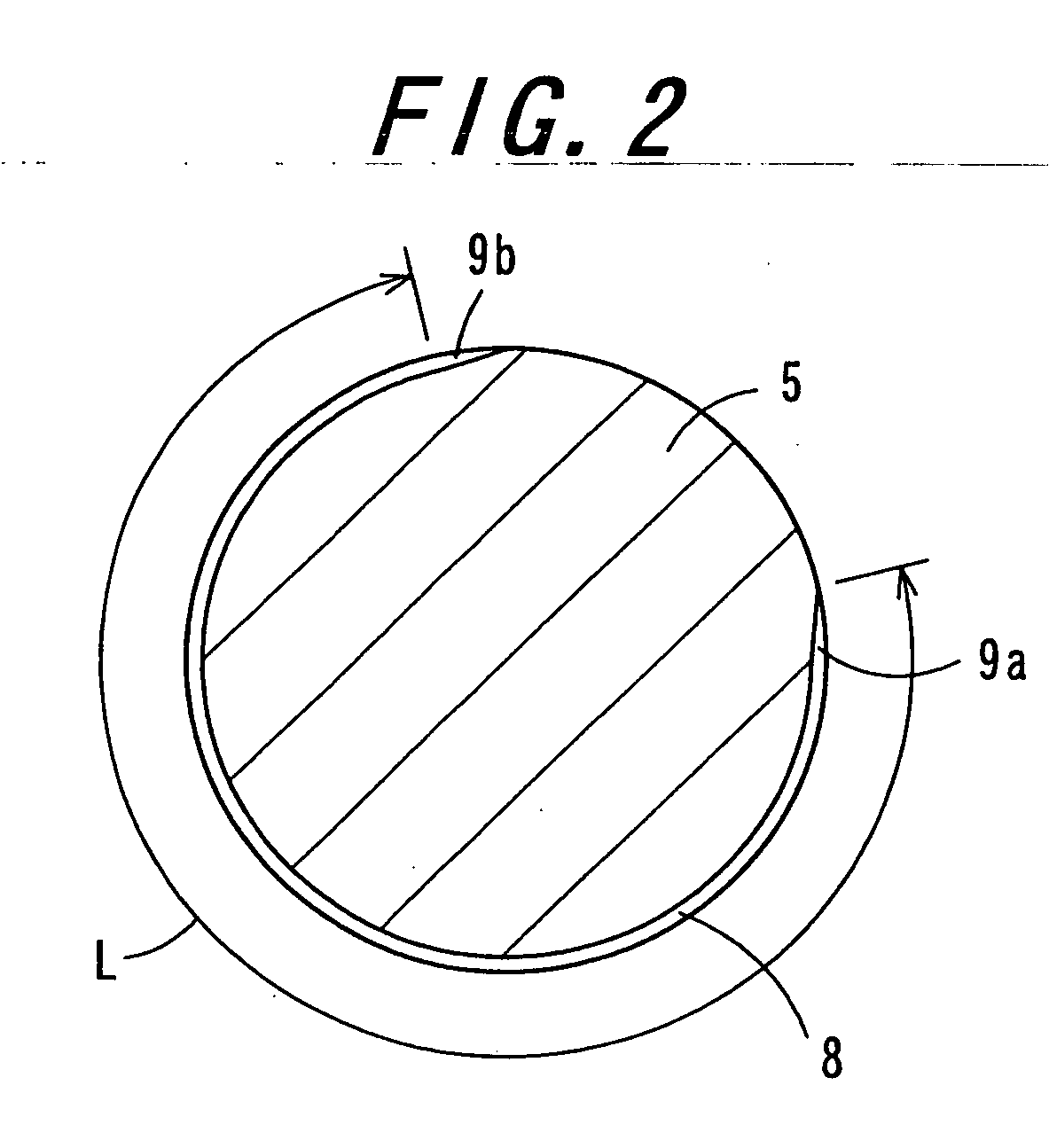However, these related art coating methods involve such problems that a uniform coating film is not obtained and that the production efficiency is poor.
For example, the
spray coating method involves such a problem that when a
solvent having a low
boiling point is used in the coating material for electrophotographic photoreceptor, the
solvent contained in the coating material is vaporized on the way of arrival of the coating material at the
peripheral surface of the substrate, whereby the concentration of solids in the coating material increases, and therefore, when the coating material arrives at the substrate, it does not sufficiently spread on the
peripheral surface of the substrate, and the surface of the coating film becomes irregular so that a smooth coating film surface is not obtained, whereby a coating film having a uniform thickness is not obtained.
When coating is continued in such a state that the fixing of the coating film is insufficient, in the case where a desired thickness is thick, there is encountered a problem that sagging of the coating material occurs so that a coating film having a uniform thickness is not obtained, either.
In order to avoid this problem, the coating material may be dividedly coated several times. However, this method involves such problems that since coating and
drying must be repeatedly carried out until the coating film becomes dry to the touch (the state that the coating film becomes dry to a degree that a trace does not remain even by
finger touch), a time required for achieving works is long and that steps thereof are extremely complicated.
The coating film formed in the interior and end face of the substrate becomes an obstacle in installing a
flange, etc. in the substrate.
Accordingly, in order to formulate a substrate in which a coating film is formed in the interior and end face thereof into a substrate for electrophotographic photoreceptor, there is encountered a problem that the coating film formed in the interior and end face of the substrate must be peeled away.
Further, since the thickness of the coating film is largely affected by physical properties of the coating material and a lifting rate after dipping, when lifting is carried out at a
constant rate, a thickness difference between the upper end and the lower end of the substrate is generated.
However, that control is difficult.
Also, there is encountered a problem that in order to form a coating film having a uniform thickness, the lifting rate after dipping must be made slow.
Thus, high production efficiency was not obtained.
According to the blade coating method, though high producibility is obtained, there is encountered a problem that when the blade is moved backward, a phenomenon wherein a part of the coating film coated on the substrate swells occurs due to a
surface tension of the substrate so that the thickness becomes non-uniform by this swelling.
The roll coating method involves a problem caused by special characteristics of a substrate as a material to be coated that it is cylindrical, namely,
residence of a coating material generated when a cylindrical substrate as a material to be coated rotates and the once
coated surface returns repeatedly to a coating portion makes the thickness non-uniform.
However, according( to the related art technology disclosed in JP-A 3-12261, in the case where the substrate makes only one revolution, there is encountered a problem that not only it is difficult to obtain a uniform coating film, but also a seam of the coating material generated when the substrate is kept away from the roll remains.
However, this method involves such a problem that the thickness must be precisely controlled in expectation of an amount of the
residence of the coating material to be subjected to leveling in advance and the substrate must be kept while rotating for a period of time necessary for achieving leveling, resulting in a lowering of the production efficiency.
Also, though a gravure offset method that has hitherto been employed is excellent as a method of forming a certain specific pattern with good precision, it is concerned with a technology fundamentally different from so-called “coating” of forming a uniform coating film and involves such a problem that when it is intended to form a coating film on a cylindrical substrate, a pattern of a plate remains, or a seam is formed.
 Login to View More
Login to View More 


